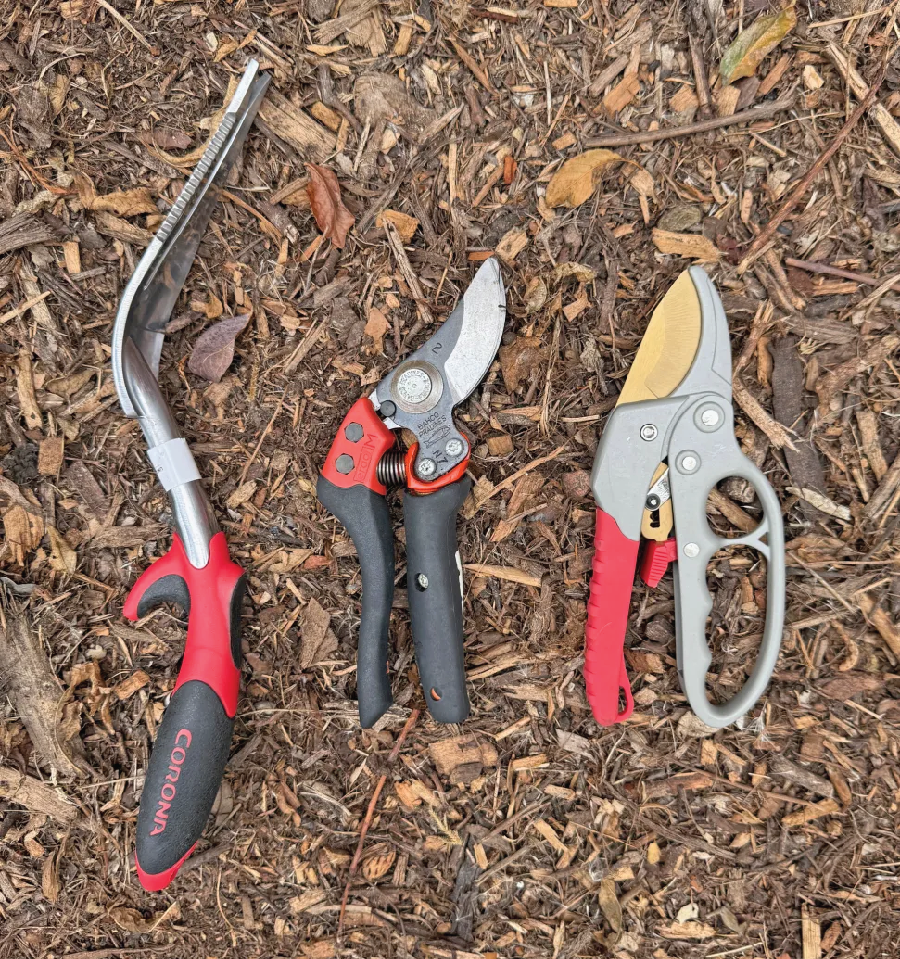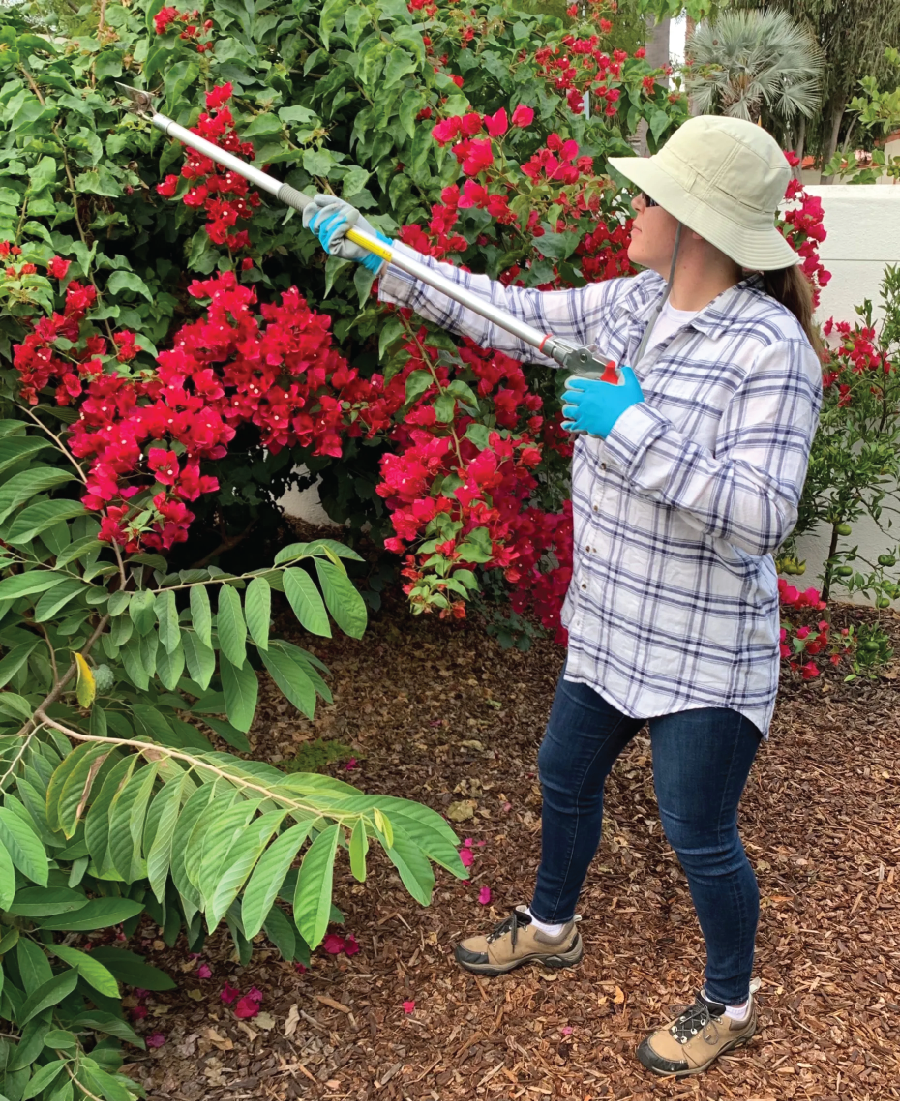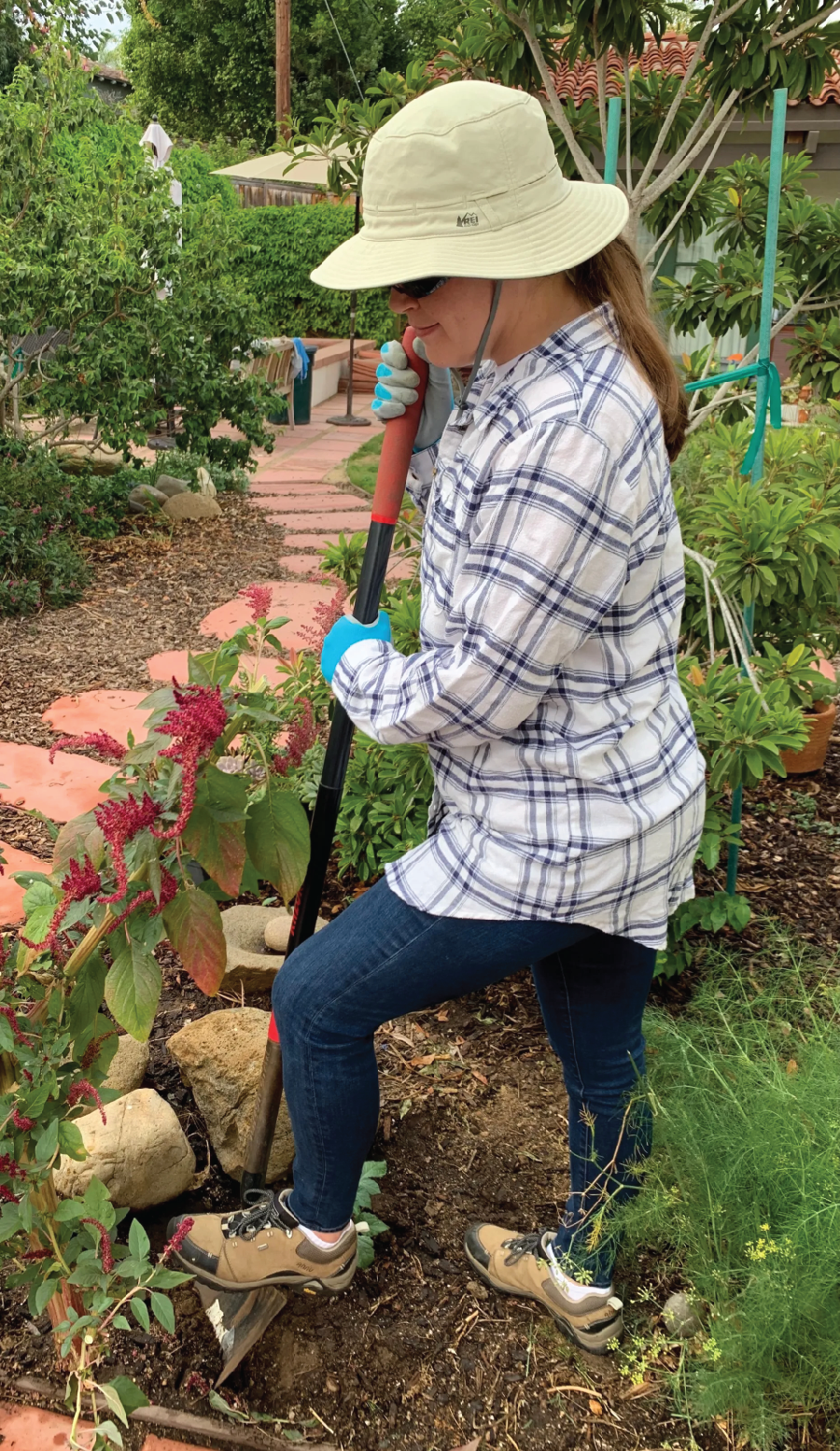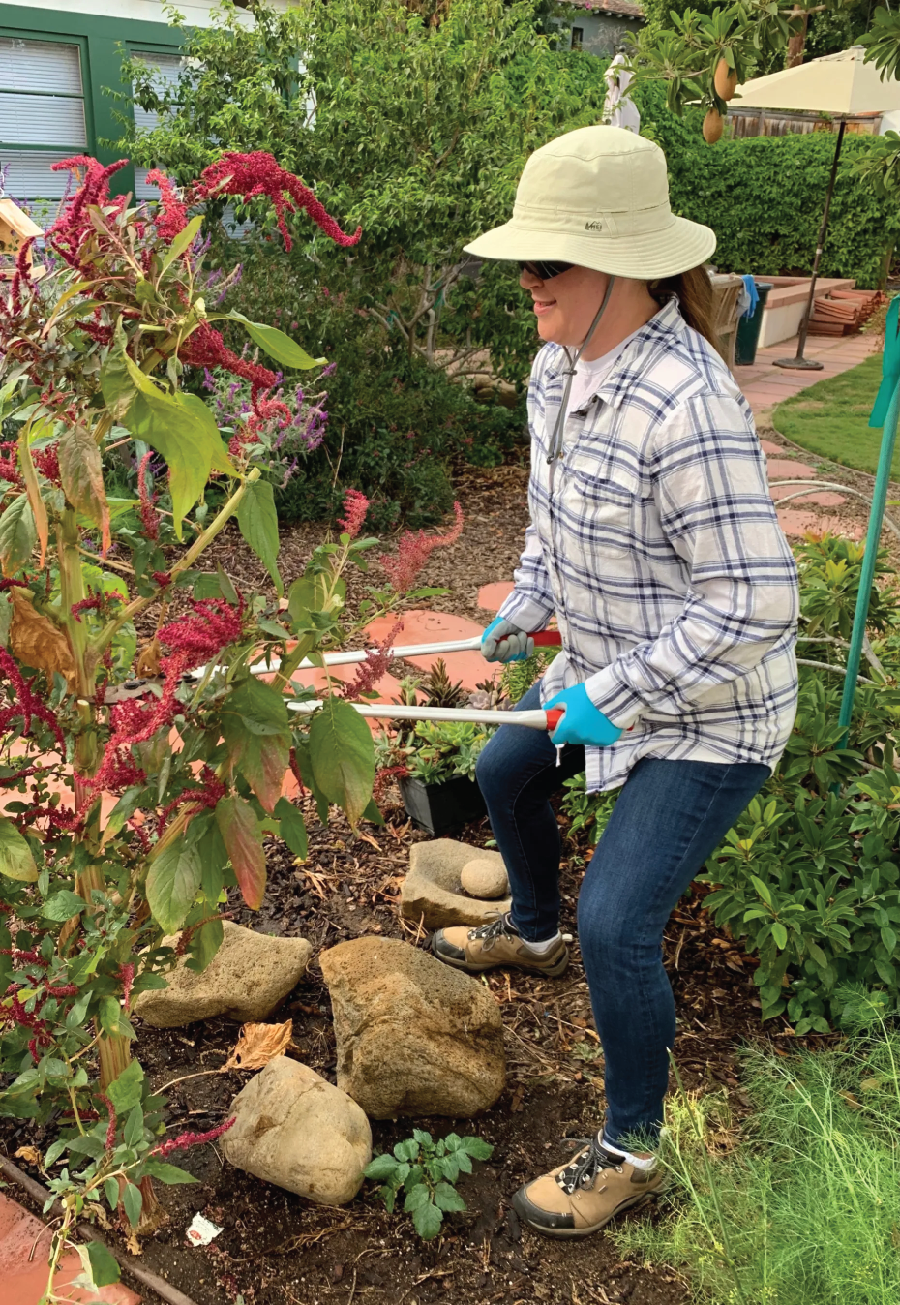Checklist can help you avoid injury in garden

Examples of ergonomic tools: The trowel on the left is curved, to move the work to the arm. The pruner in the middle has a rotating handle and curved design, to reduce strain, and the D-handle on the pruner on the right makes gripping the tool easier. (Jodi Bay)
Examine your setting, tools and your own form to ensure that you're gardening safely
By Jodi Bay & DeLayne Harmon
(This article originally appeared in the February 8, 2025 edition of the San Diego Union-Tribune)
Gardening is good for the mind, body and soul: It provides exercise, mental stimulation, community and beauty. The Centers for Disease Control and Prevention states that 2.5 hours of moderate exercise each week, like gardening, can reduce the risk of cardiovascular disease, high blood pressure, Type 2 diabetes and many other ailments. In addition, being outside reduces stress and is relaxing.
To gain health benefits and reduce injuries from gardening, however, it’s important to follow and practice safe gardening techniques.
In a 1996 study, the Consumer Product Safety Commission found that in the U.S., more than 400,000 people visit the hospital emergency room annually because of a gardening injury. Most gardening injuries are bruises, lacerations, strains and sprains, with the more serious being broken bones and musculoskeletal injury. The most common causes of injury are falling, poor body positioning, being hit by something, and improper use of tools. The tool that causes the most severe injuries is the lawnmower.
Here are some recommendations to reduce injuries while gardening. Keep in mind the phrase “Prepare, Aware, Position” while in the garden.
Prepare
Before starting into gardening, make a plan. Decide what is going to be done in the allotted time. Gather supplies like tools, seeds, pots etc. Check each item first for operability. The gardening effort is complicated when the tools and other items are not working or are broken.

This gardener is practicing good ergonomics by keeping the tool at shoulder height, thereby reducing the chance of a strain and fall. (Devin Harmon)
Use the right tool for the task. This makes the work safer and easier.
Protect yourself by wearing a hat, closed-toe shoes, gloves and eye protection if pruning or working with chemicals. There is a potential of debris or chemicals to enter your eyes.
Wear long sleeves and pants and ensure that the clothing is not loose fitting. Loose fitting clothing can get caught in power tools and tree limbs, which could lead to injury.
Wear sunscreen and hydrate initially and while gardening, even on cloudy days.
Stretch your arms, legs and back muscles with simple, warm-up exercises to reduce muscle strain. In fact, remember to also stretch during and after gardening tasks.
Aware
Survey the surroundings for potential hazards. Look for uneven ground or holes, low branches, or potential trip hazards such as above-ground roots.
Be aware of garden tools left on the ground and always face tools tines down. If the rake tines or hoe or shovel blade are up and then stepped upon, there is a potential danger of injury. It is an unforgettable feeling to be hit in the forehead with a long-handled garden tool.

Close-toed shoes with a good sole, gloves and a hat protect this gardener from the sun and pressure-point injuries. (Devin Harmon)
Be cognizant of pruner, lopper and pruning saw blades while gardening. Keep hands and fingers away from the blade; cutting tools are sharp and will cause bleeding.
Know where children are at all times. They love to help, and learning to garden is fun. Ensure that they are participating at a level comparable with their age and that sharp tools and heavy objects are out of reach.
Don’t forget to be self-aware. Rest if tired, hydrate if thirsty, and cool down if hot.
Position
Practice safe body positioning while gardening. Many times, improper movement will lead to muscle strains or spasms. A good technique is to use the larger muscles in your body such as the thigh or arm muscles to do the work rather than the smaller hand, wrist and lower back muscles. For example, plant your feet firmly on the ground, bend the knees slightly and carry body weight in the larger thigh muscles.
When using garden tools, such as loppers or a pole pruner, keep your elbows at shoulder height and below. This reduces muscle strain and improves stability.
Pressure points are the parts of your body that touch something else. In gardening, this generally means hands and feet. Wear gloves and thick socks to reduce blisters.

This gardener is using proper ergonomics, with her feet firmly planted, and her weight is carried by her thigh muscles. (Devin Harmon)
Vary the gardening tasks. Repetitive motion can lead to muscle soreness and fatigue. Break up chores by pausing or by doing something else. For example, if you are pruning many roses, prune some and rest, or complete another garden task that uses different muscles and come back to the roses.
Remember to not twist. This potentially causes back muscle spasms. Instead, pick up your feet and move them so that your hips face the plant you are working on.
Select the right tool
Using tools that best fit your body is an easy way to reduce injury. Check that long-handled tools are the right length so that you stand upright while using. Pruners come in various grip widths. Try out a few to find the one that fits your hand. Ensure that the tool is the right weight for your use astoo heavy a tool will fatigue muscles.
If you are subject to weakness or are easily fatigued, consider ergonomic garden tools. These tools are designed to move the work to larger, stronger muscles. The University of California defines ergonomics as “… the science of fitting jobs and tools to people.” D-loop, rotating and curved handles are helpful in moving the effort to larger muscles. Try the tool before purchasing to be sure it is right for you.
As Sgt. Phil Esterhaus said in the TV show “Hill Street Blues,” “Let’s be careful out there.” Practicing safe gardening techniques will help reduce injuries for you and others.
Bay has been a Master Gardener since 2012. She is past chair of the Tool Care Committee, and an instructor in the Beginning Vegetable Gardening workshops which teaches new gardeners how to grow healthy and bountiful vegetables. Harmon, a UC Master Gardener since 2020, is an active volunteer on the Tool Care Committee and enjoys using all kinds of tools to garden in the yard surrounding her historic Kensington home.

